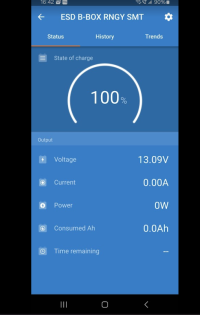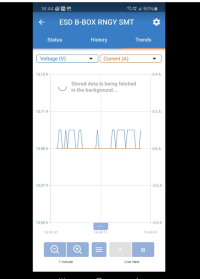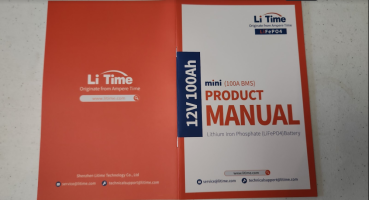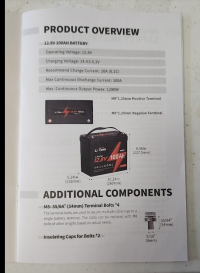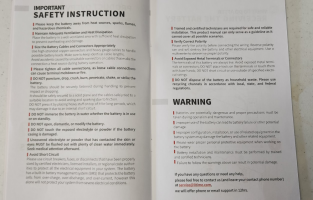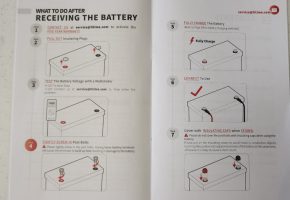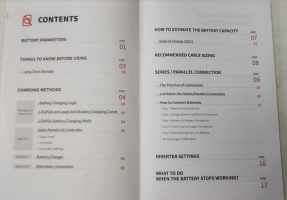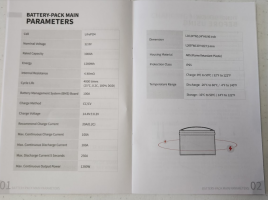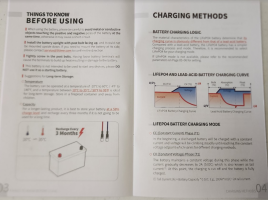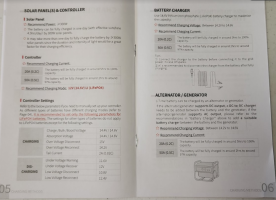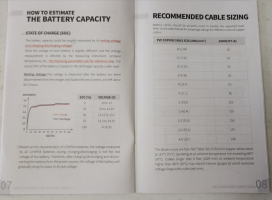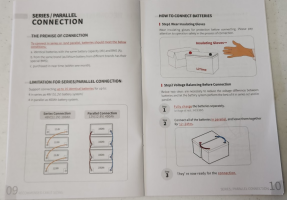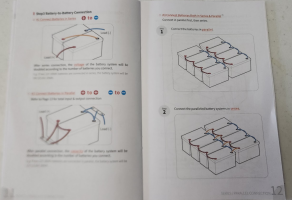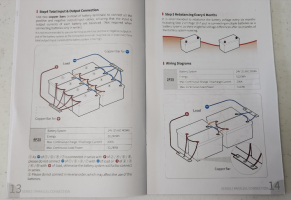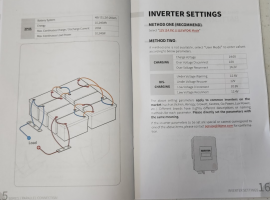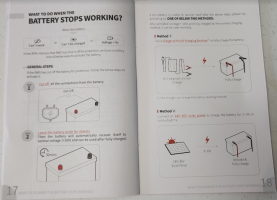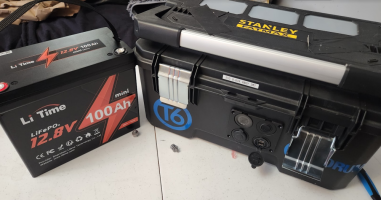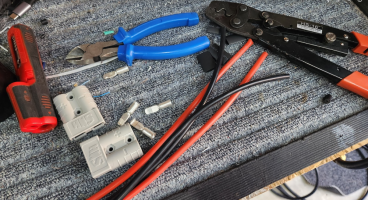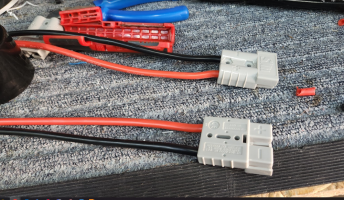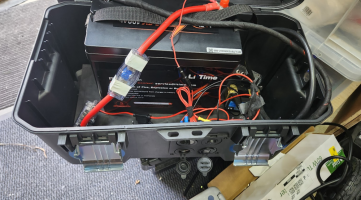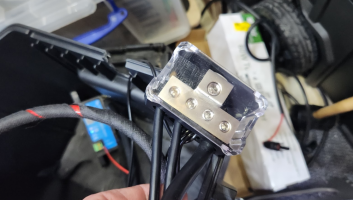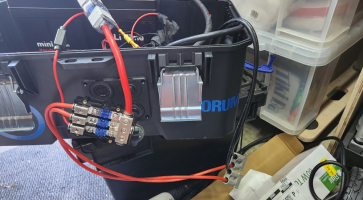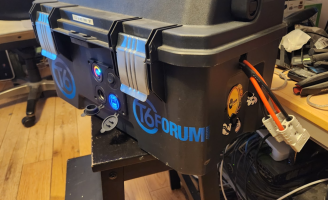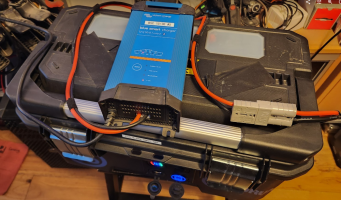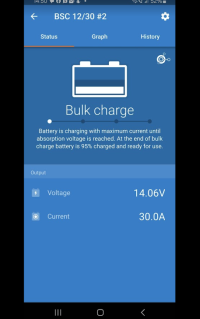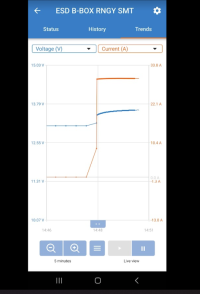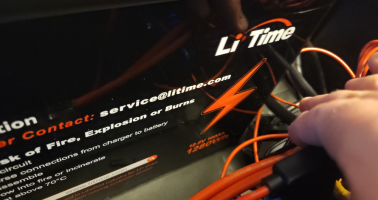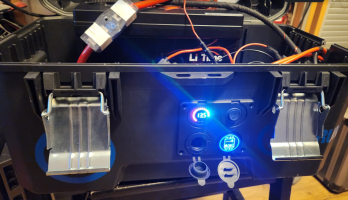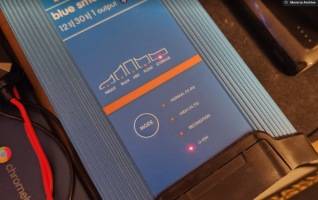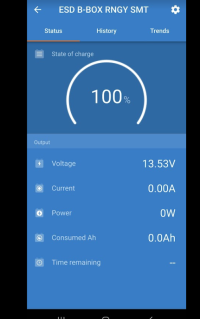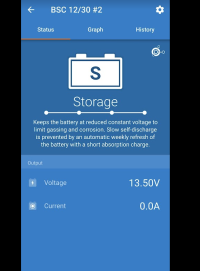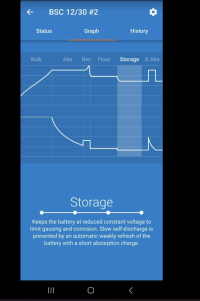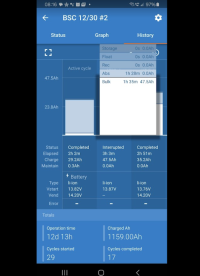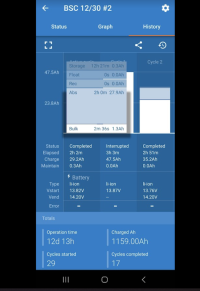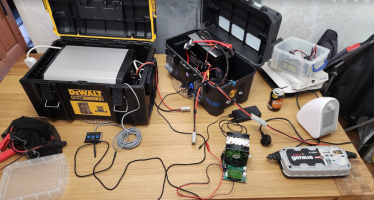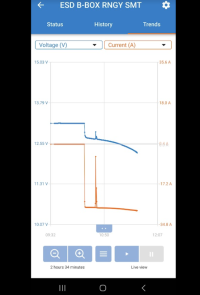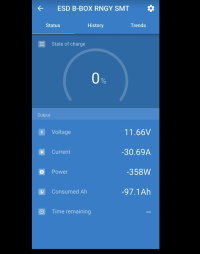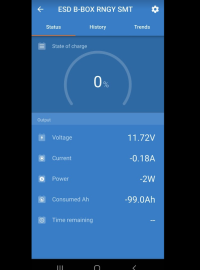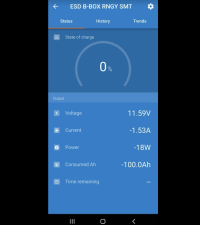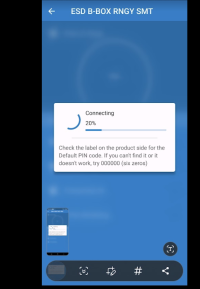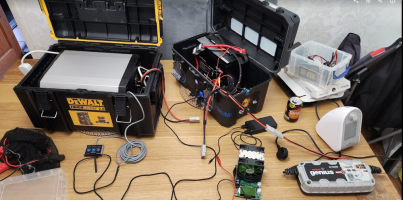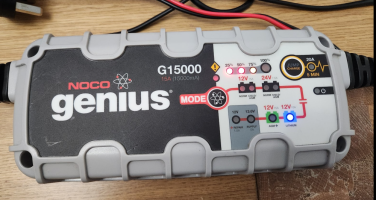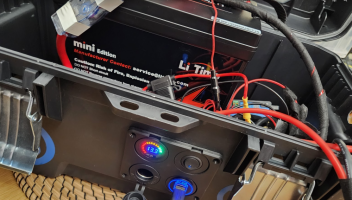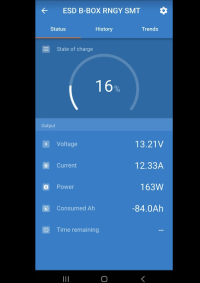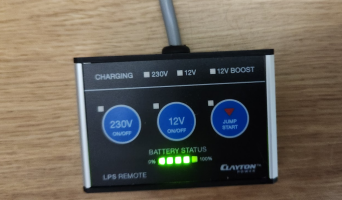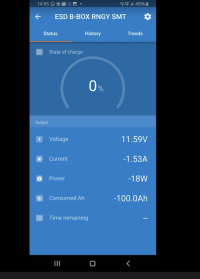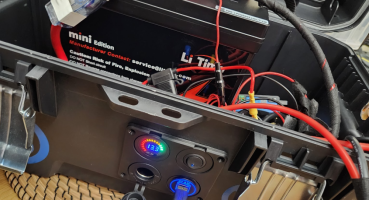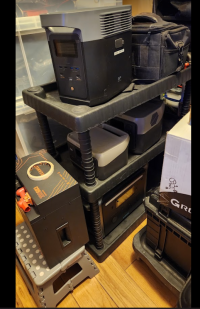LiTime 100ah Mini 12v Lifepo4 - How I Done It -
"LiTime 12V 100Ah LiFePO4 Lithium Battery, Built-In 100A BMS, 1280Wh Energy" - for £299.99
++++
what its got:
over charge protection
over - discharge protection
over current protection
high temp protection
what its not got:
low temp charge protection
BT APP or SoC display (so you need to fit a separate shunt if you want a SoC gauge)
++++
lets take a look. . . . . . . .
+++++++
£299.99 --
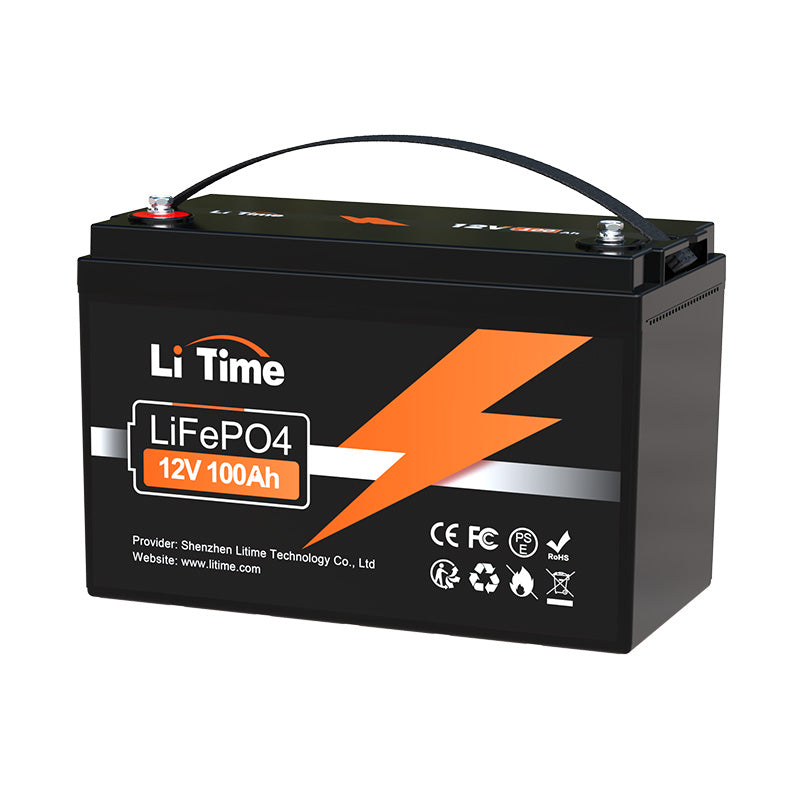
 uk.litime.com
uk.litime.com
+++++++
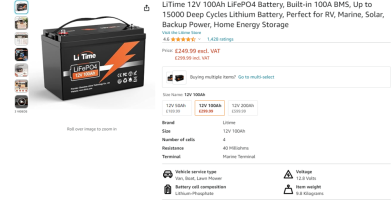
+++++++
time to look at the LiTime MINI 100ah.
its well packaged and details the UN3480 for shipping.
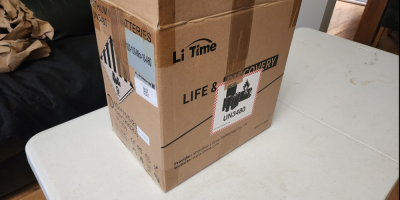
whats different about this battery is the "MINI" bit, as in size. . .
Dimensions: L13*W6.77*H8.43 inches (L329*W172*H214 mm)
so its a bit smaller and thinner, but slightly taller.?
+++++++++++++++++++++++
lets see what the website says about it . . . . . .
【Grade A Lithium Battery & 10 Years Lifetime】 LiTime lithium iron batteries have exceptional quality since they are manufactured by Automotive Grade LiFePO4 Cells with higher energy density, more stable performance & greater power. Highest-level safety based on UL Test Reports for the cells inside the battery. It provides 4000+ cycles @100% DOD (6000 Cycles @80% DOD, 15000 Cycles @60% DOD) & a 10-year lifetime compared to 200~500 cycles & a 3-year lifetime in SLA/AGM battery.
【100% Top Protection】 LiTime LiFePO4 battery has built-in 100A BMS to protect it from overcharging, over-discharging, over-current, overheating and short circuits with excellent self-discharge rate, ensuring the LiFePO4 battery's safety level and optimize the 12V battery performance. Our battery is IP65 waterproof, setting you free from worrying to install indoors or outdoors.
【Capacity Expansion & Wide Applications】 LiTime 12V 100Ah battery supports up to 4 in series and 4 in parallel (Max 4S4P) to get more capacity (200Ah, 300Ah, 400Ah) and higher voltage (24V, 36V, Max.48V). Max connected in 16 batteries to build a 48V 400Ah battery system, with 20.48kWh energy, max. 20.48kW load power. Various combinations make it perfect for RV, solar, home storage, and off-grid application. Make a bold trial of your first DIY battery system.
【1/5*Lightweight & More Flexible Applications】 One LiTime 12V 100Ah LiFePO4 battery has a lightweight of 24.25lbs, only 1/5 of a 12V 200Ah lead acid battery (about 130lbs), but equivalent in energy, faster to be fully charged, which makes it easier to carry and more convenient to use. This product is your best choice for outdoor camping power and indoor easy installation. No more worries about overweight and limited capacity.
【Fast Delivery & Outstanding Service】 We are committed to providing you with satisfactory service. Fast delivery because the battery will be shipped from our local warehouses in BD and GBA. Professional technical support, humanized return policy & customer service as we provide easy-to-understand operation manuals & online services with a quick response within 24hrs. If you have any questions, please feel free to contact us and we will do our best to support you.
+++++
SPEC wise we have:
Battery Pack Case: ABS Plastic
Protection Class: IP65
Warranty: 5 years
UPC: 791541936056
Charge Voltage: 14.4V±0.2V
Recommend Charge Current: 20A (0.2C)
Nominal/Usable Capability: 100Ah
Nominal Voltage: 12.8V
Energy: 1280Wh
Cycle Life: ≥4000 times
Max. Continuous Charge/Discharge Current: 100A
Max. Discharge Current 5 Seconds: 280A
Max. Continuous Load Power: 1280W
Internal Impedance: ≤40mΩ
Discharge Temperature: -4℉ ~ 140℉ (-20℃ ~ 60℃)
Storage Temperature: 14℉ ~ 122℉ (-10℃ ~ 50℃)
1* user manual
..
lets take a look. . .
++++
what its got:
over charge protection
over - discharge protection
over current protection
high temp protection
what its not got:
low temp charge protection
BT APP or SoC display (so you need to fit a separate shunt if you want a SoC gauge)
++++
the bolts come in this little pocket at the top. . .
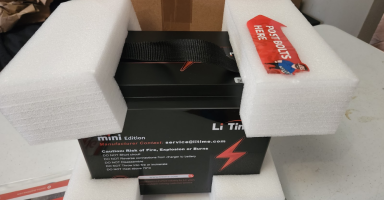
you get four bolts and two top caps. . .
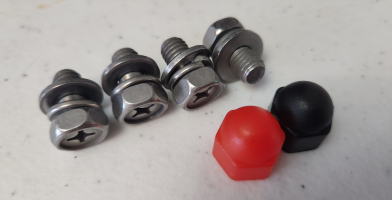
the battery its self also comes with protective top caps to insulate the terminals - which is nice.
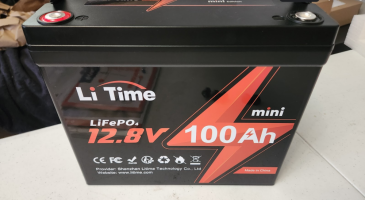
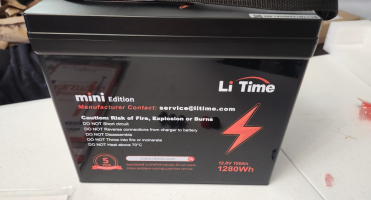
out the box the battery is resting at 13.09v . . . . so about 50% charged.
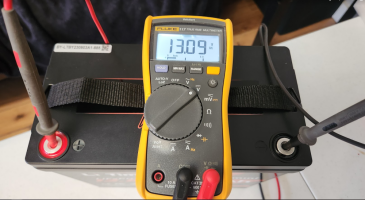
now the first thing we need to do is get it in a battery box. . . . .
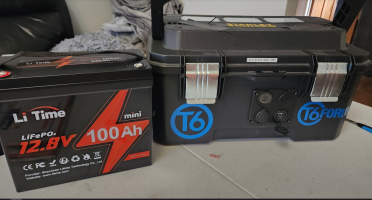
but befoe that. . . .
lets take a look at the paperwork - which comes in a very nice A4 wallet folder thing - Nice touch LiTime.
there is a whole load od stuff in the folder, so lets go through it. . .
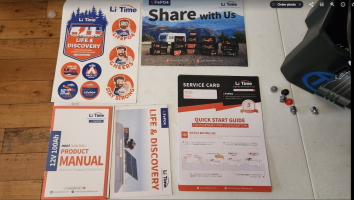
first off we have this A4 sheet of LiTime stickers.
they feature this Trendy, bearded, metro-sexual Hipster type bloke.. . .
the stickers promote various outdoories stuff. - not sure ill be sticking the on the van. but a nice touch all the same.

next up was a flyer detailing all the range. . .
they do the whole 12v / 24v leisure thing.
but also 48v / 51v Domestic Solar batteries as well.

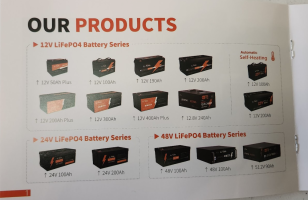
there is a quick start - service guide.
that details some of the basics. .
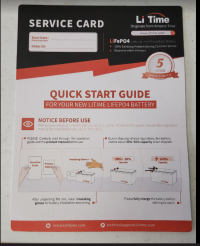
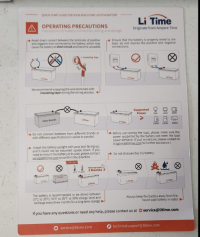
they also show some Cert`s that they have . . .
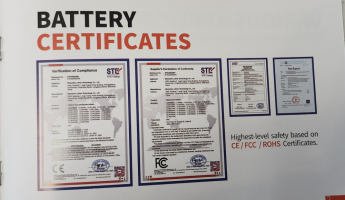
The manual is interesting. . . . . . and well come back to that later..
++++
for now lest get it in the box. . .
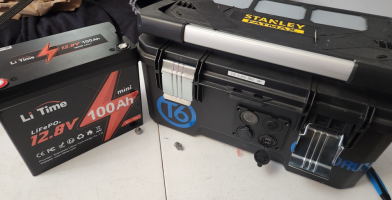
we have a box with a Victron smart shunt,
seeing as this battery BMS has no BT or APP or screen etc - we need to use an external SHUNT to see whats going on,
Voltage , SoC, Temp, etc etc
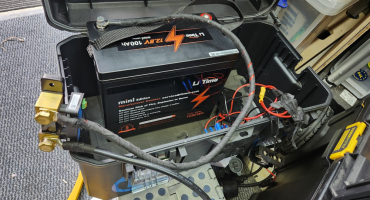
the battery uses M8 terminals. . .
so we can quickly hook up a MIDI fuse block.
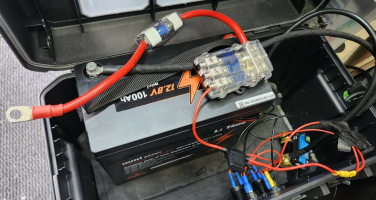
.
we have life . .
the Panel Volt meter reads 13.1v - which is the same as the Fluke meter, so thats all good.
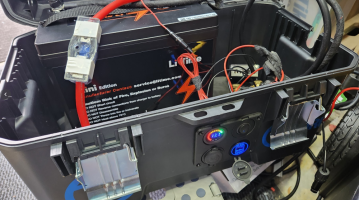
.
right ok, . . .
ready to rumble.
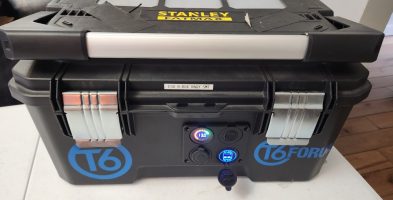
this victron shunt is out of whack. . . and showing 100% Soc - which is not right.
but there is a setting in the menu for that . . . . either start @100% or @last value or @unknown.
ill leave it like that for now, as we can reset the shunt by fully charging the battery . . to get the real 100% SoC.
pic limit . . . .
"LiTime 12V 100Ah LiFePO4 Lithium Battery, Built-In 100A BMS, 1280Wh Energy" - for £299.99
++++
what its got:
over charge protection
over - discharge protection
over current protection
high temp protection
what its not got:
low temp charge protection
BT APP or SoC display (so you need to fit a separate shunt if you want a SoC gauge)
++++
lets take a look. . . . . . . .
+++++++
£299.99 --

LiTime 12V 100Ah LiFePO4 Lithium Battery, Built-In 100A BMS, 1280Wh En
LiTime 12V 100Ah LiFePO4 Lithium Battery is perfect for RV, Solar, Marine & Home Energy Backup. Maintenance-free, 4000+ Deep Cycles. Backup by the best customer support.
+++++++

+++++++
time to look at the LiTime MINI 100ah.
its well packaged and details the UN3480 for shipping.

whats different about this battery is the "MINI" bit, as in size. . .
Dimensions: L13*W6.77*H8.43 inches (L329*W172*H214 mm)
so its a bit smaller and thinner, but slightly taller.?
+++++++++++++++++++++++
lets see what the website says about it . . . . . .
【Grade A Lithium Battery & 10 Years Lifetime】 LiTime lithium iron batteries have exceptional quality since they are manufactured by Automotive Grade LiFePO4 Cells with higher energy density, more stable performance & greater power. Highest-level safety based on UL Test Reports for the cells inside the battery. It provides 4000+ cycles @100% DOD (6000 Cycles @80% DOD, 15000 Cycles @60% DOD) & a 10-year lifetime compared to 200~500 cycles & a 3-year lifetime in SLA/AGM battery.
【100% Top Protection】 LiTime LiFePO4 battery has built-in 100A BMS to protect it from overcharging, over-discharging, over-current, overheating and short circuits with excellent self-discharge rate, ensuring the LiFePO4 battery's safety level and optimize the 12V battery performance. Our battery is IP65 waterproof, setting you free from worrying to install indoors or outdoors.
【Capacity Expansion & Wide Applications】 LiTime 12V 100Ah battery supports up to 4 in series and 4 in parallel (Max 4S4P) to get more capacity (200Ah, 300Ah, 400Ah) and higher voltage (24V, 36V, Max.48V). Max connected in 16 batteries to build a 48V 400Ah battery system, with 20.48kWh energy, max. 20.48kW load power. Various combinations make it perfect for RV, solar, home storage, and off-grid application. Make a bold trial of your first DIY battery system.
【1/5*Lightweight & More Flexible Applications】 One LiTime 12V 100Ah LiFePO4 battery has a lightweight of 24.25lbs, only 1/5 of a 12V 200Ah lead acid battery (about 130lbs), but equivalent in energy, faster to be fully charged, which makes it easier to carry and more convenient to use. This product is your best choice for outdoor camping power and indoor easy installation. No more worries about overweight and limited capacity.
【Fast Delivery & Outstanding Service】 We are committed to providing you with satisfactory service. Fast delivery because the battery will be shipped from our local warehouses in BD and GBA. Professional technical support, humanized return policy & customer service as we provide easy-to-understand operation manuals & online services with a quick response within 24hrs. If you have any questions, please feel free to contact us and we will do our best to support you.
+++++
SPEC wise we have:
GENERAL
Dimensions: L13*W6.77*H8.43 inches (L329*W172*H214 mm)Battery Pack Case: ABS Plastic
Protection Class: IP65
Warranty: 5 years
UPC: 791541936056
CHARGE
Charge Method: CC/CVCharge Voltage: 14.4V±0.2V
Recommend Charge Current: 20A (0.2C)
BATTERY
Cell: Prismatic LiFePO4 BatteryNominal/Usable Capability: 100Ah
Nominal Voltage: 12.8V
Energy: 1280Wh
Cycle Life: ≥4000 times
BMS
BMS Boar: 100AMax. Continuous Charge/Discharge Current: 100A
Max. Discharge Current 5 Seconds: 280A
Max. Continuous Load Power: 1280W
Internal Impedance: ≤40mΩ
TEMPERATURE
Charge Temperature: 32℉ ~ 122℉ (0℃ ~ 50℃)Discharge Temperature: -4℉ ~ 140℉ (-20℃ ~ 60℃)
Storage Temperature: 14℉ ~ 122℉ (-10℃ ~ 50℃)
PACKAGE
1* 12V 100Ah LiFePO4 Lithium Battery1* user manual
..
lets take a look. . .
++++
what its got:
over charge protection
over - discharge protection
over current protection
high temp protection
what its not got:
low temp charge protection
BT APP or SoC display (so you need to fit a separate shunt if you want a SoC gauge)
++++
the bolts come in this little pocket at the top. . .

you get four bolts and two top caps. . .

the battery its self also comes with protective top caps to insulate the terminals - which is nice.


out the box the battery is resting at 13.09v . . . . so about 50% charged.

now the first thing we need to do is get it in a battery box. . . . .

but befoe that. . . .
lets take a look at the paperwork - which comes in a very nice A4 wallet folder thing - Nice touch LiTime.
there is a whole load od stuff in the folder, so lets go through it. . .

first off we have this A4 sheet of LiTime stickers.
they feature this Trendy, bearded, metro-sexual Hipster type bloke.. . .
the stickers promote various outdoories stuff. - not sure ill be sticking the on the van. but a nice touch all the same.

next up was a flyer detailing all the range. . .
they do the whole 12v / 24v leisure thing.
but also 48v / 51v Domestic Solar batteries as well.


there is a quick start - service guide.
that details some of the basics. .


they also show some Cert`s that they have . . .

The manual is interesting. . . . . . and well come back to that later..
++++
for now lest get it in the box. . .

we have a box with a Victron smart shunt,
seeing as this battery BMS has no BT or APP or screen etc - we need to use an external SHUNT to see whats going on,
Voltage , SoC, Temp, etc etc

the battery uses M8 terminals. . .
so we can quickly hook up a MIDI fuse block.

.
we have life . .
the Panel Volt meter reads 13.1v - which is the same as the Fluke meter, so thats all good.

.
right ok, . . .
ready to rumble.

this victron shunt is out of whack. . . and showing 100% Soc - which is not right.
but there is a setting in the menu for that . . . . either start @100% or @last value or @unknown.
ill leave it like that for now, as we can reset the shunt by fully charging the battery . . to get the real 100% SoC.
pic limit . . . .
Last edited:

